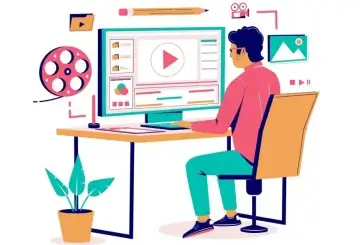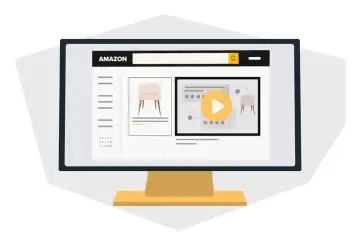Your logo is like the face of your brand. It’s what people see first, and it should tell them what your business is all about – its personality, values, and identity. Interestingly, many small and medium-sized businesses (SMBs) don’t realize just how important a well-designed logo can be. In this guide, we’re going to walk you through the process of creating a logo that really makes an impact on your SMB. Whether you’re a seasoned entrepreneur or just starting out, understanding logo design is essential. So, come along with us on this creative journey as we explore the art of becoming a skilled “Logo Designer.”
Table of Contents
Understanding the Basics
Before we dive into the nitty-gritty of logo design, let’s lay down the fundamental principles.
Purpose and Significance
- Clear Communication: Your logo needs to speak volumes about your business, conveying its essence effortlessly. It should give viewers a quick glimpse into your industry, mission, and values.
- Memorable First Impression: Keep in mind that your logo is often the first thing potential customers encounter. It’s your brand’s initial handshake, so make it memorable and create a positive, lasting impression.
- Differentiation: In a crowded market, it’s crucial to stand out. Reflect on what makes your business unique and let your logo highlight those distinctive qualities. It’s your chance to shine amidst the competition.
Simplicity is Key
- Instant Recognition: Simple logos make it easy for people to recognize your brand right away. No need for puzzling over what it means.
- Timelessness: When your logo is simple, it tends to stand the test of time. Avoid trendy stuff that can quickly go out of style.
- Adaptability: A simple logo is like a chameleon. It works well in all sorts of places, whether it’s on a small phone screen or a huge billboard. It’s always clear and effective.
Versatility and Scalability
- Consistency: It’s essential that your logo looks good whether it’s big or small. When people see it, they should always recognize it. Consistency in how it looks is super important for making sure folks remember your brand.
- Responsive Design: Think about how your logo will show up on different digital gadgets, like smartphones, tablets, and regular old computers. It needs to look sharp no matter what device people are using.
- Print Considerations: Don’t forget about the physical world! Your logo should work just as well on printed stuff like brochures and packaging. It should be just as striking on paper as it is on a screen.
Research and Inspiration
To start crafting a great logo, the first thing you need to do is gather ideas and learn about your industry. This helps you understand what’s out there and what might work for you.
Competitor Analysis
- Start by looking at what others in your field are doing. See if there are any common things in their logos. Also, pay attention to stuff that everyone’s doing – maybe it’s time to break away from the pack and do something unique.
Target Audience
- Build a picture of your typical customers so you know them inside and out. When you’re picking design stuff for your logo, make sure it’s something they’d like. Your logo needs to talk to them.
Inspiration Boards
- Find pictures, colors, and designs that catch your eye and match the mood you want for your logo.
- If you’re working with a designer, these mood boards can help them see what’s in your head. And if you’re doing it yourself, they’ll keep you on track.
Design Elements
Let’s dive into the Building Blocks. It’s time to explore the elements that will give your logo its unique look and feel. These elements are the pieces that will shape your logo.
Typography
- Think about the kinds of letters that fit your brand’s personality and message. Make sure the letters look good, even if they’re small.
- That way, everyone can read what you’re saying.
Color Palette
- Look into how different colors make people feel and what they think when they see them. This helps you pick colors that match your brand and connect with your audience.
- Once you’ve got the feeling down, choose colors that fit your brand’s vibe and what your audience likes. This will help your logo connect with people on a deeper level.
Shapes and Symbols
- Have some fun by trying out different shapes and symbols. Look for ones that really fit your brand’s story.
- Shapes can have different meanings in different places, so consider what they might say to people.
- Some shapes have meanings that everyone understands, while others might mean different things to different folks.
Sketching and Concept Development
Hand Sketching
- Grab a piece of paper and start sketching lots of different ideas for your logo. It’s like brainstorming with pictures.
- Don’t stress about making everything look perfect right now. Just get your ideas down on paper. You’re capturing the concepts, not making a finished masterpiece.
Digital Tools
- After you’ve done your sketches on paper, it’s time to take those ideas onto a computer.
- You’ll want to use vector graphics software that can make your design look smooth and clear, no matter how big or small you want it to be.
- These programs are like magic for making your logo look just right.
The Logo Design Process
Logo Types
- Research and understand the characteristics and use cases of various logotypes.
- Choose the type that best represents your brand and message.
Balance and Symmetry
- Ensure visual equilibrium in your design, so it doesn’t feel lopsided or chaotic.
- Symmetry can create a sense of order and harmony.
Proportion
- Maintain consistent proportions between different elements in your logo.
- This consistency aids in readability and visual balance.
Negative Space
- Explore how negative space can be used creatively in your logo.
- It can convey hidden meanings and make your logo more interesting.
Feedback and Iteration
Gather Feedback
- Don’t hesitate to seek feedback from colleagues, friends, or even your target audience. Different perspectives can lead to valuable insights.
Refinement
- Based on feedback, refine your logo design. Make adjustments to improve its overall impact.
Finalization and Implementation
Scalability Testing
- Before finalizing your logo, test it at various sizes to ensure it remains clear and legible.
File Formats
- Prepare your logo in different file formats (e.g., PNG, SVG, JPEG) for versatile use across different platforms.
Trademark Protection
- Consider trademarking your logo to protect your brand identity.
Wrapping it All Up: What We’ve Learned
In this full guide to making logos for small and medium-sized businesses, we’ve walked through the basic rules and the steps you need to follow to get really good at making logos.
Just remember, your logo isn’t just a picture. It’s like your brand’s fingerprint; it shows the world what you’re all about. From the very first steps to the last touches, every move you make in designing your logo matters.
Keep in mind, that a good logo can make you stand out, even in a sea of competition. So, make sure your logo leaves a mark that sticks with your audience.
If you run a small or medium-sized business, don’t overlook how crucial a top-notch logo can be. It’s like planting a seed that grows into recognition and trust from your customers.
So, get excited about being the “Logo Designer” for your brand, and let’s start this exciting journey to create a logo that shouts your business from the rooftops!




